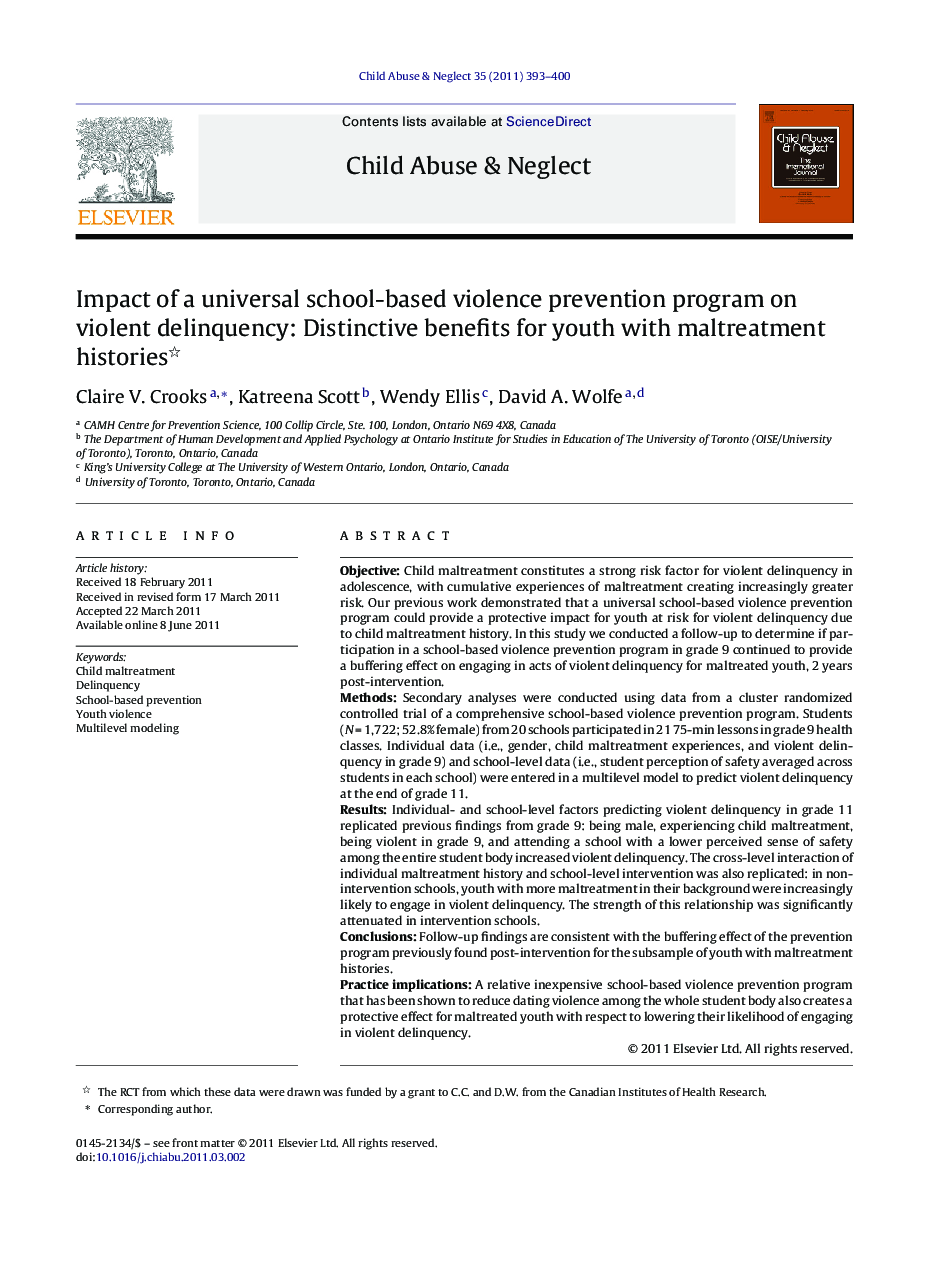| Article ID | Journal | Published Year | Pages | File Type |
|---|---|---|---|---|
| 345143 | Child Abuse & Neglect | 2011 | 8 Pages |
ObjectiveChild maltreatment constitutes a strong risk factor for violent delinquency in adolescence, with cumulative experiences of maltreatment creating increasingly greater risk. Our previous work demonstrated that a universal school-based violence prevention program could provide a protective impact for youth at risk for violent delinquency due to child maltreatment history. In this study we conducted a follow-up to determine if participation in a school-based violence prevention program in grade 9 continued to provide a buffering effect on engaging in acts of violent delinquency for maltreated youth, 2 years post-intervention.MethodsSecondary analyses were conducted using data from a cluster randomized controlled trial of a comprehensive school-based violence prevention program. Students (N = 1,722; 52.8% female) from 20 schools participated in 21 75-min lessons in grade 9 health classes. Individual data (i.e., gender, child maltreatment experiences, and violent delinquency in grade 9) and school-level data (i.e., student perception of safety averaged across students in each school) were entered in a multilevel model to predict violent delinquency at the end of grade 11.ResultsIndividual- and school-level factors predicting violent delinquency in grade 11 replicated previous findings from grade 9: being male, experiencing child maltreatment, being violent in grade 9, and attending a school with a lower perceived sense of safety among the entire student body increased violent delinquency. The cross-level interaction of individual maltreatment history and school-level intervention was also replicated: in non-intervention schools, youth with more maltreatment in their background were increasingly likely to engage in violent delinquency. The strength of this relationship was significantly attenuated in intervention schools.ConclusionsFollow-up findings are consistent with the buffering effect of the prevention program previously found post-intervention for the subsample of youth with maltreatment histories.Practice implicationsA relative inexpensive school-based violence prevention program that has been shown to reduce dating violence among the whole student body also creates a protective effect for maltreated youth with respect to lowering their likelihood of engaging in violent delinquency.
